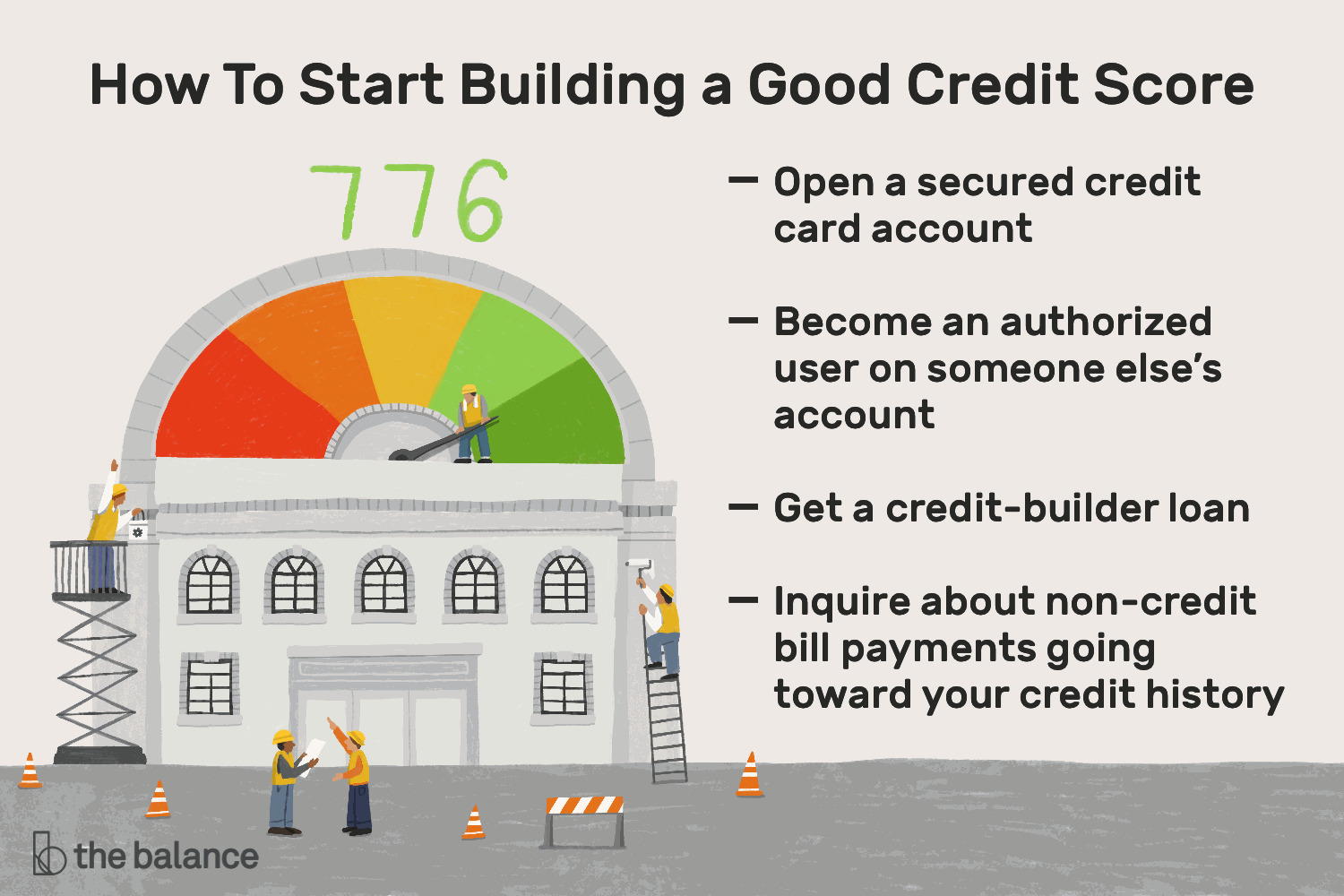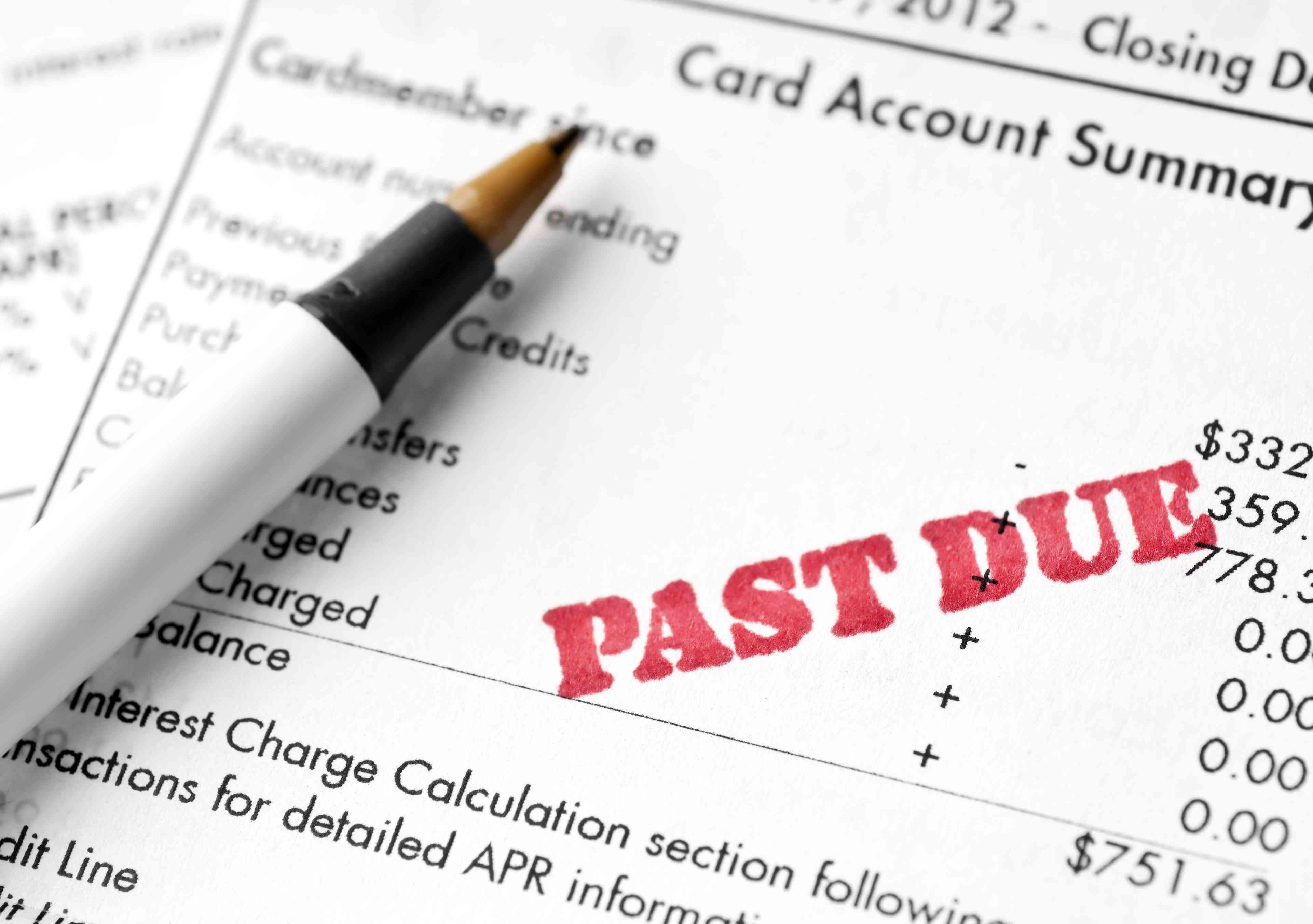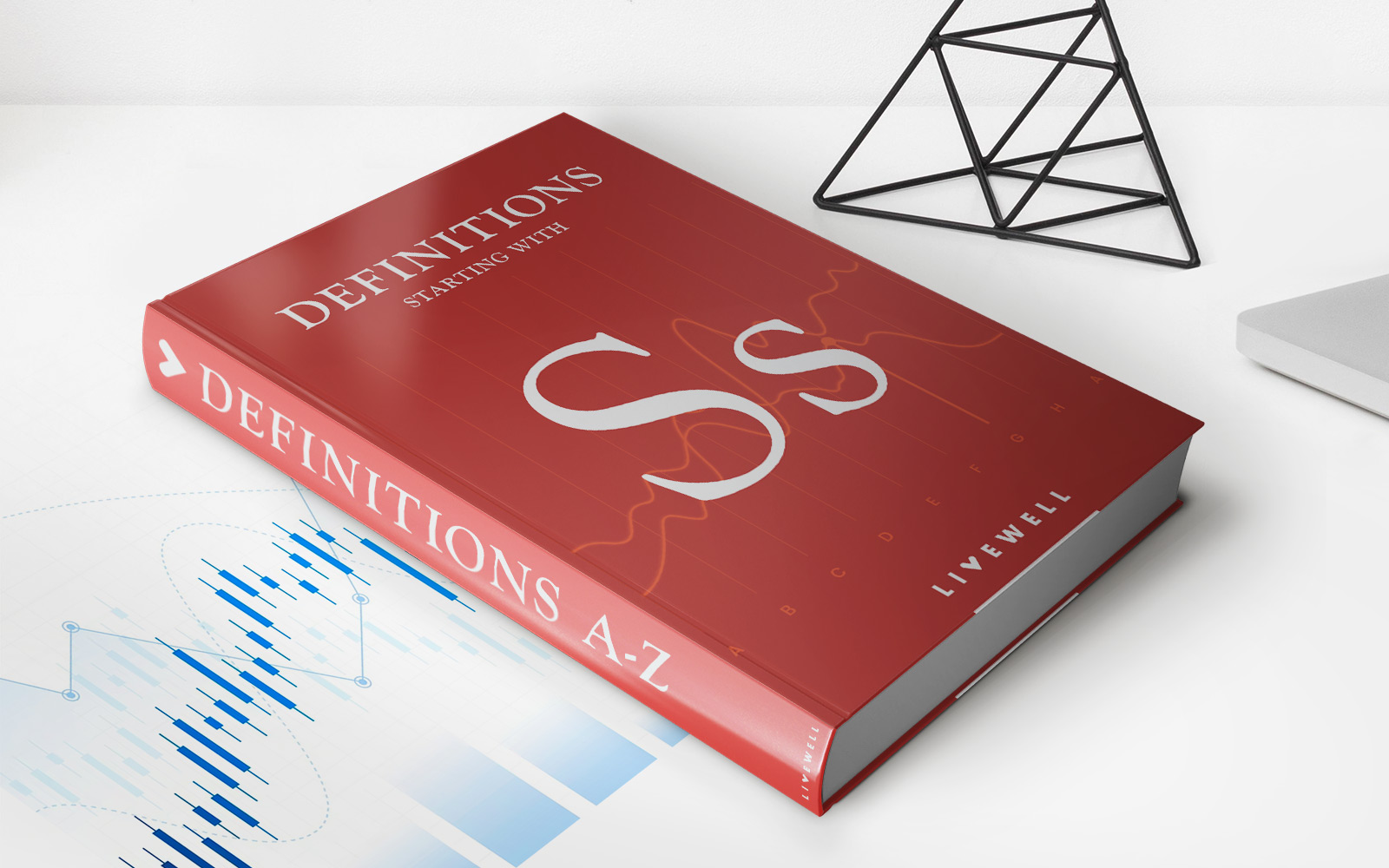Home>Finance>If I Pay Off A Chunk Of Revolving Credit, How Long Does It Take For My Credit Score To Raise


Finance
If I Pay Off A Chunk Of Revolving Credit, How Long Does It Take For My Credit Score To Raise
Published: February 29, 2024
Paying off a chunk of revolving credit can improve your credit score, but the timeframe for seeing results may vary. Learn how to manage your finances effectively.
(Many of the links in this article redirect to a specific reviewed product. Your purchase of these products through affiliate links helps to generate commission for LiveWell, at no extra cost. Learn more)
Table of Contents
- Understanding the Dynamics of Credit Score Improvement
- Demystifying the Concept of Revolving Credit
- Unveiling the Ripple Effect of Settling Revolving Credit Balances
- Deciphering the Influential Variables in Credit Score Enhancement
- Navigating the Path to Enhanced Credit Scores
- Empowering Financial Well-Being Through Informed Credit Management
Introduction
Understanding the Dynamics of Credit Score Improvement
Credit scores play a pivotal role in financial well-being, influencing the ability to secure loans, obtain favorable interest rates, and even access certain job opportunities. As such, understanding the factors that contribute to credit score fluctuations is essential for making informed financial decisions. One common query that often arises is the timeline for credit score improvement after paying off a significant portion of revolving credit. This article aims to delve into this pertinent topic, shedding light on the mechanisms that underpin credit score adjustments and the variables that can influence the pace of improvement.
The journey toward a healthier credit score involves a nuanced interplay of various financial elements, encompassing credit utilization, payment history, length of credit history, new credit inquiries, and credit mix. By unraveling the intricacies of these factors, individuals can gain insights into the dynamics of credit score enhancement and make strategic choices to bolster their financial standing.
Throughout this article, we will explore the impact of paying off revolving credit on credit scores, elucidate the key determinants that shape the trajectory of credit score improvement, and provide clarity on the timelines associated with witnessing tangible enhancements in one's credit score. By demystifying the process of credit score elevation, readers will be empowered to navigate their financial endeavors with confidence and foresight.
Join us on this enlightening journey as we unravel the mysteries of credit score improvement, offering actionable insights and valuable knowledge to empower individuals in their quest for financial well-being.
Understanding Revolving Credit
Demystifying the Concept of Revolving Credit
Revolving credit represents a flexible form of borrowing that allows individuals to repeatedly access funds up to a predetermined credit limit. Unlike installment credit, which involves borrowing a fixed sum and repaying it in regular installments over a specified period, revolving credit affords borrowers the flexibility to utilize funds as needed, with the option to carry a balance from one month to the next, subject to minimum payments.
Credit cards and lines of credit are common examples of revolving credit facilities. When individuals use their credit cards for purchases or cash advances, they are essentially tapping into their revolving credit lines. The outstanding balance on these accounts fluctuates based on the amounts borrowed and the subsequent repayments made. This dynamic nature distinguishes revolving credit from other forms of borrowing, as it offers a revolving door of access to funds, providing a level of financial flexibility that aligns with the evolving needs and circumstances of borrowers.
Moreover, revolving credit grants individuals the autonomy to manage their credit utilization, a crucial factor in determining credit scores. By judiciously utilizing available credit and maintaining low balances, individuals can optimize their credit utilization ratio, a key metric that influences credit scores. Understanding the nuances of revolving credit empowers individuals to leverage this financial tool effectively, harnessing its flexibility while navigating the intricacies of credit management.
As we delve deeper into the impact of paying off revolving credit on credit scores, comprehending the fundamental tenets of revolving credit lays a solid foundation for unraveling the broader implications of credit score improvement. By grasping the essence of revolving credit and its interplay with credit scoring mechanisms, individuals can gain a comprehensive understanding of the dynamics at play, empowering them to make informed decisions to enhance their financial well-being.
Impact of Paying Off Revolving Credit
Unveiling the Ripple Effect of Settling Revolving Credit Balances
Settling a substantial portion of revolving credit can yield multifaceted repercussions, exerting a tangible influence on an individual’s financial landscape. When individuals make significant payments toward their revolving credit balances, several pivotal dynamics come into play, each contributing to the overarching impact on credit scores and financial well-being.
One immediate effect of paying off revolving credit is the reduction in credit utilization, a critical factor in credit scoring models. Credit utilization ratio, which reflects the proportion of available credit being utilized, holds considerable sway over credit scores. By paying down revolving credit balances, individuals can lower their credit utilization ratio, signaling responsible credit management to credit bureaus and potentially bolstering their credit scores.
Furthermore, reducing revolving credit balances can alleviate the burden of accrued interest, potentially leading to long-term cost savings. As interest accrual diminishes, individuals may find themselves in a more favorable financial position, with freed-up funds that can be allocated toward savings, investments, or other financial goals.
Moreover, the act of paying off revolving credit can engender a sense of financial empowerment and discipline. It signifies a proactive approach to debt management and financial responsibility, instilling a positive narrative that can resonate with lenders and credit evaluators. This demonstration of fiscal prudence can augur well for future credit endeavors, potentially opening doors to more favorable loan terms and credit opportunities.
While the impact of paying off revolving credit on credit scores is undeniably significant, it is essential to recognize that individual financial scenarios can vary, and the magnitude of credit score improvement may differ based on a myriad of factors. By comprehending the multifaceted implications of settling revolving credit balances, individuals can gain a clearer perspective on the potential outcomes and make informed decisions to optimize their financial standing.
As we navigate the terrain of credit score improvement, understanding the ripple effect of paying off revolving credit is instrumental in charting a course toward enhanced financial well-being, empowering individuals to leverage this knowledge to their advantage.
Factors Affecting Credit Score Increase
Deciphering the Influential Variables in Credit Score Enhancement
The trajectory of credit score increase following the payment of revolving credit balances is shaped by a confluence of factors that collectively contribute to the nuanced dynamics of credit scoring models. Understanding these influential variables is pivotal in gauging the potential impact on credit scores and navigating the journey toward credit score enhancement.
Credit Utilization Ratio: One of the foremost determinants of credit score increase is the credit utilization ratio, which reflects the proportion of available credit being utilized. By paying off revolving credit balances and reducing outstanding debt, individuals can lower their credit utilization ratio, potentially leading to an uptick in credit scores.
Payment History: Timely payments are a cornerstone of credit score improvement. Consistently settling bills and meeting financial obligations punctually can contribute to positive adjustments in credit scores, underscoring the significance of responsible debt management.
Credit Mix: The diversity of credit accounts held by an individual, including revolving credit and installment credit, can influence credit score increase. A well-rounded credit mix that encompasses various types of credit can signal financial dexterity and responsible credit management, potentially bolstering credit scores.
Length of Credit History: The duration of one’s credit history plays a pivotal role in credit score enhancement. Establishing a lengthy and robust credit history can contribute to favorable adjustments in credit scores, underscoring the importance of maintaining longstanding credit accounts.
New Credit Inquiries: When individuals apply for new credit, inquiries are made into their credit reports, potentially impacting credit scores. Managing new credit inquiries judiciously and avoiding excessive credit applications can mitigate adverse effects on credit scores, fostering a conducive environment for credit score increase.
By comprehending the intricate interplay of these factors, individuals can gain insights into the variables that underpin credit score increase and make informed decisions to optimize their credit profiles. The confluence of credit utilization, payment history, credit mix, length of credit history, and new credit inquiries collectively shapes the trajectory of credit score improvement, offering a holistic vantage point for individuals to navigate their financial journeys with acumen and foresight.
As we unravel the multifaceted facets of credit score enhancement, a nuanced understanding of these influential variables empowers individuals to orchestrate strategic maneuvers that can pave the way for tangible improvements in their credit scores, fostering a path toward enhanced financial well-being.
Timelines for Credit Score Improvement
Navigating the Path to Enhanced Credit Scores
The timeline for observing tangible improvements in credit scores following the payment of revolving credit balances is contingent on a myriad of variables, each exerting a distinct influence on the pace of credit score enhancement. While the precise timeline for credit score improvement can vary based on individual circumstances, several overarching considerations can provide insights into the general trajectories of credit score adjustments.
Immediate Impact: Upon paying off a significant portion of revolving credit, individuals may witness an immediate reduction in their credit utilization ratio, potentially laying the groundwork for initial credit score improvement. This immediate alleviation of credit burden can set the stage for positive adjustments in credit scores in the short term.
One to Two Billing Cycles: In many cases, credit score improvements may become discernible within one to two billing cycles following the payment of revolving credit balances. As credit bureaus update individuals’ credit reports to reflect the lowered credit utilization and reduced outstanding debt, the ensuing billing cycles may unveil incremental enhancements in credit scores.
Medium-Term Trajectory: Over the medium term, typically spanning several months, the impact of paying off revolving credit on credit scores may manifest more prominently. As individuals consistently maintain lower credit utilization ratios and demonstrate responsible debt management practices, credit scores may exhibit steady upward trends, reflecting the sustained positive influence of reduced revolving credit balances.
Long-Term Outlook: In the long term, the effects of paying off revolving credit can culminate in substantial credit score improvements, provided individuals continue to uphold prudent financial habits and navigate their credit endeavors judiciously. By maintaining disciplined credit utilization, prioritizing timely payments, and cultivating a favorable credit mix, individuals can position themselves for enduring credit score enhancement over the long haul.
It is important to note that the timelines for credit score improvement are inherently fluid, contingent on individual financial behaviors, credit reporting cycles, and the intricacies of credit scoring algorithms. While some individuals may observe rapid credit score adjustments, others may experience a more gradual trajectory toward enhanced credit scores. By remaining attentive to their credit management practices and exercising financial prudence, individuals can optimize the timelines for credit score improvement and lay the groundwork for sustained financial well-being.
As individuals embark on the journey toward credit score enhancement, understanding the nuanced timelines and potential milestones in credit score improvement empowers them to navigate their financial trajectories with clarity and purpose, fostering a path toward enduring credit health and resilience.
Conclusion
Empowering Financial Well-Being Through Informed Credit Management
As we conclude our exploration of the intricate interplay between paying off revolving credit and credit score improvement, it becomes evident that the dynamics of credit management are multifaceted, encompassing a myriad of variables that collectively shape individuals’ financial well-being. By unraveling the mechanisms that underpin credit score adjustments and the influential factors that dictate the trajectories of credit score improvement, individuals can equip themselves with the knowledge and acumen to navigate their financial endeavors with foresight and confidence.
The impact of paying off revolving credit on credit scores extends beyond mere numerical adjustments, permeating the broader fabric of individuals’ financial narratives. It signifies a proactive commitment to responsible debt management, a testament to fiscal prudence, and a catalyst for enhanced financial resilience. As individuals strive to optimize their credit scores and bolster their financial standing, the ripple effects of settling revolving credit balances reverberate across their financial landscapes, fostering a climate of empowerment and opportunity.
Moreover, the timelines for credit score improvement, while inherently variable, offer valuable insights into the potential trajectories of credit score adjustments. By understanding the immediate, short-term, medium-term, and long-term implications of paying off revolving credit, individuals can chart a course toward enduring credit health, leveraging strategic maneuvers and prudent financial habits to orchestrate tangible improvements in their credit scores.
Ultimately, the journey toward credit score enhancement is underpinned by informed decision-making, disciplined credit management, and a steadfast commitment to financial well-being. By harnessing the knowledge gleaned from this exploration, individuals are poised to traverse the terrain of credit management with clarity and purpose, leveraging their understanding of credit utilization, payment history, credit mix, length of credit history, and new credit inquiries to fortify their credit profiles and cultivate enduring financial resilience.
As individuals embark on their quests for credit score improvement, armed with insights into the impact of paying off revolving credit and the influential variables that shape credit score adjustments, they are empowered to navigate their financial trajectories with acumen and foresight. By embracing the principles of responsible credit management and leveraging their newfound understanding of credit score dynamics, individuals can forge a path toward enduring financial well-being, fostering a climate of empowerment and prosperity.














